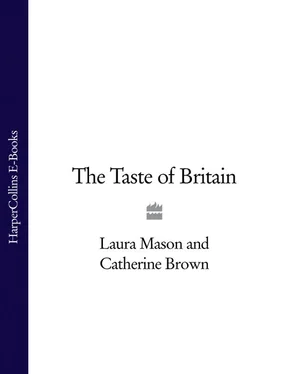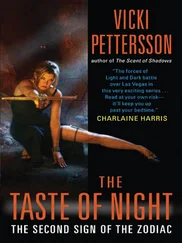The second reason for resistance to regional labelling is illustrated by the pork pie issue. The pie makers of Melton Mowbray are currently battling to have their product awarded PGI (Protected Geographic Indication) status. That would mean only pies made in the area, to a traditional recipe, could carry the name. Other pork pie makers, from other areas, object to this. They want to call their products Melton Mowbray pies, too, arguing that their recipe is much the same. That’s nonsense, of course: a recipe is only the beginning of a dish, a mere framework. The where, the how and the who of its making are just as important. But why would you even want to call your pie a Mowbray pie if it comes from London, or Swansea? Only, perhaps, if you know the real Mowbray pies taste better, and you can’t be bothered to make your own recipe good enough to compete.
All of which goes to show why the issue of regionality is as relevent today as it ever has been. It’s important not to see The Taste of Britain as a history book, a compendium of nostalgic culinary whimsy. The food included here is alive and well, and there is nothing described in these pages that you can’t eat today, as long as you go to the right place. That’s perhaps the most important criterion for inclusion because our regional food traditions are just as much part of the future as the past. At least, they had better be, or we will be in serious trouble.
The implications for our health, and the health of our environment, are far-reaching. If we eat, say, fruit that’s produced locally, not only do we reduce the food miles that are wrecking our climate, but that fruit will be fresher and richer in nutrients. If we can go to a butcher’s shop to buy meat that’s been raised nearby, we can ask the butcher how it was farmed, and how it was slaughtered. And perhaps we can take our children with us, so they learn something too. In the end, a local food culture, supplied in the main by contiguous communities, militates against secrecy, adulteration - cruelty even - and in favour of transparency, accountability and good practice. What could be more reassuring than knowing the names and addresses of the people who produce your food?
I don’t think it’s overstating the case, either, to say that a knowledge of regional cooking promotes resourcefulness and a renewed respect for food in all of us. Regional dishes are, by their very nature, simple things. This is folk cooking - a ‘nose to tail’ approach that uses whatever’s available and makes it go as far as possible. For a while now - since conspicuous consumption has become practically an end in itself - our predecessors’ abhorrence of throwing away anything may have seemed at best, quaint, at worst, laughable. But as we begin to come to terms with the consequences of our ‘have it all now’ culture, it is becoming clear that ethical production, good husbandry, environmental responsibility and kitchen thrift all go hand in hand. The frugal culture that gave birth to chitterlings and lardy cake, Bath chaps and bread pudding is something we should be proud to belong to. To re-embrace it can only do us good.
Aside from their currency, the foods in this book have had to prove themselves in other ways. They must be unique to a specific region and they must have longevity, having been made or produced for at least 75 years. Finally, they must be, to use a rather ugly word, ‘artisanal’. That means that special knowledge and skills are required to make them properly. Which brings me to one crucial element of good food that should never be forgotten: the people who make it. Almost without exception, the brewers, bakers, cooks, farmers and fishermen who produce traditional foods are what you might call ‘characters’. This doesn’t mean they are yokels caught in a yesteryear time warp. They are people of passion and commitment, intelligence and good humour, and often extraordinary specialist knowledge. And they know more than most of us about the meaning of life.
Not a single one of them goes to work in the morning in order to make lots of money-you certainly don’t choose to devote your life to bannock-making in the hope it will furnish you with a swimming pool and a Ferrari. They do it because they believe in it and, ultimately, feel it is worthwhile. In their own quiet and industrious way, they understand just how much is at stake. The future of civilized, communal, respectful life on our islands? It is not preposterous to suggest it. Use your regular custom and generously expressed enthusiasm to support this modest army of dedicated souls, working away in their kitchens, gardens, orchards breweries and smokehouses all over Britain, and you do a great deal more than simply save a cheese, or a beer, for posterity. You help save the next generation from the tyranny of industrial mediocrity.
Amid this talk of pride and principles, it’s crucial not to lose sight of the fact that this is food to be enjoyed, celebrated - and shared with friends. Dishes don’t survive down the centuries unless they taste good. You may not need much persuasion to try some of the buttery cakes or fabulously fresh fruit and veg described in these pages. But you will perhaps need a sense of adventure to rediscover the charms of some of the entries. Be ready to cast your squeamishness aside and sample some tripe, some tongue, some trotters as well. If the experience of visitors to our River Cottage events here in Dorset is anything to go by, I’m betting you’ll be pleasantly surprised. You’ll be taking a pig’s head home from the butcher’s and making your own brawn before you can say, ‘Er, not for me, thanks.’
One element of this book to be richly savoured is the language. It is written, by Laura Mason and Catherine Brown, without hyperbole, but with a precision and clarity that far better express its authors’ underlying passion and purpose. Another thing that makes it a joy to read is its embrace of the regional food vernacular: Dorset knobs, Puggie Buns, Singin’ Hinnnies, Black Bullets and Mendip Wallfish are all to be revelled in for their names alone. Indeed, some might be tempted to enjoy The Taste of Britain chiefly as a glorious catalogue of eccentricity, a celebration of the cowsheel and the careless gooseberry, of the head cheese and the damson cheese (neither of which are actually cheese) that make British food so charming and idiosyncractic.
But to do so would be to miss out. Now that this book exists, now that it is in your hands, use it to bring about change. It should not be taken as a slice of the past, in aspic, but as a well-stocked store cupboard, with the potential to enrich our future food culture. See it not as a preservation order for British regional foods, but a call to action. Use this book as a guide, not merely to seek out delicious things that you’ve never tried before, but also to recreate some of them in your own kitchen. Do that and you’ll be actively participating in a great food culture that has always been with us, that is often hidden beneath the mass-produced, homogenous, seasonless food we are so frequently offered, but which may yet have a vibrant future.
This book is a thorough and splendid answer to the question ‘What is British food?’ Use it well, and it may help to ensure that is still a meaningful question a hundred years from now.
Hugh Fearnley- Whittingstall
In 1994 we embarked on a mission to describe as many British foods with regional affiliations as we could find. We were part of a Europe-wide project working within a framework - handed down from Brussels - which demanded a link to the terroir (soil). In fact the project, named Euroterroir, was more suited to rural southern Europe than industrialized, urbanized Britain. How do you link Yorkshire Relish to the soil? But ultimately we succeeded in writing up some four hundred British entries. And along the way we asked some broader questions - what are our traditional foods? What is the character of British taste?
Читать дальше












